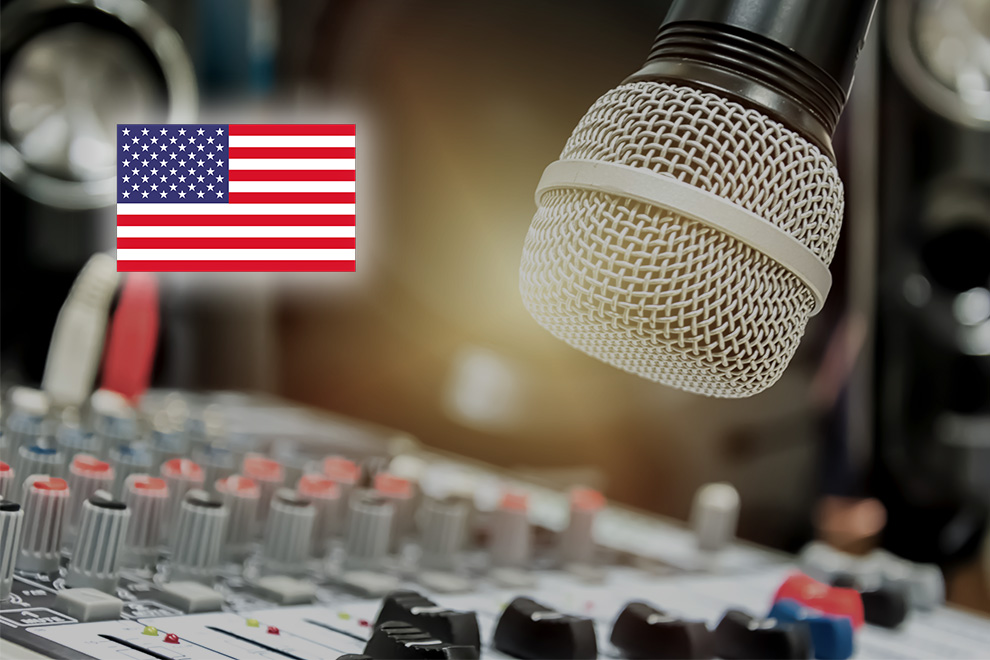The Pew Research Center conducted an analysis of the state of broadcasting in the USA to provide information about the listening audience, radio journalism, and the radio industry as a whole in the United States. Here are 7 facts from the Pew Research Center’s analysis on the state of broadcasting in America.
1) About eight in ten Americans aged 12 and older listen to broadcast radio every week. The weekly broadcast radio listener audience in the USA has been high for many years, although there was a slight decline in 2020 when the Pew Research Center analyzed these data. According to Nielsen Media Research data published by the Radio Advertising Bureau, 83% of Americans aged 12 and older listened to broadcast radio during the week in that year, which is slightly less than the 89% in 2019. The decrease in the number of listeners in 2020 coincided with the start of the COVID-19 outbreak in the USA.
2) Nearly half of adult Americans say they sometimes or often listen to news on the radio. In a Pew Research Center survey conducted in the summer of 2022, 47% of adult Americans stated that they at least sometimes listen to news on the radio, and this figure has remained relatively constant in recent years. In the same survey, only 7% of adults said they prefer radio over other platforms for news consumption.
White and Black Americans are equally likely to listen to news on the radio at least sometimes (48% each). Meanwhile, 42% of adult Latinos and 37% of adult Asians say they at least sometimes get news from the radio. When it comes to age, adults aged 50 to 64 are most likely to at least sometimes get news from the radio, with just over half (55%) saying they listen to news on the radio; 48% aged 30 to 49, 46% aged 65 and older, and 35% aged 18 to 29 say the same.
3) According to a Center survey conducted in 2018, one in five adult Americans says they often learn local news from radio stations. This is lower than the proportion of adults who say they often watch local news on TV (38%), but comparable to the share who often learn local news from daily newspapers (17%). It is higher than the share of local news on online forums (12%) or other sources.
4) After a decline in the mid-2010s, employment in radio newsrooms has remained relatively stable in recent years. According to an analysis of Bureau of Labor Statistics (BLS) data by the Pew Research Center, in 2020, the broadcasting industry employed 3360 news agency employees. This is about 1000 less than in 2004, when there were 4290 such employees, but the number was roughly the same as in more recent years.
The relative stability of employment in radio news departments is reflected in the Center’s 2022 survey, in which journalists were asked whether their news departments were mainly expanding, contracting, or staying about the same. Among journalists who said that the main platform of their news service was radio or podcast, 53% stated that their organization was mainly staying about the same, while 28% said it was expanding, and 19% said it was contracting.
According to BLS data, the average annual salary in 2020 for news analysts, reporters, and journalists in the broadcasting industry was about $49,000. Editors in the broadcasting industry had an average annual salary of about $79,000.
5) Most radio journalists feel a close connection with their audience. In a survey of journalists conducted by the Center in 2022, about six out of ten radio and podcast journalists (59%) said they felt extremely or very connected to their listeners. This is significantly higher than the 45% of print media journalists, 44% among television journalists, and 43% among internet journalists who responded similarly.
6) The average income of news radio stations in the USA fell by 24% from 2019 to 2020, according to an analysis of MEDIA Access Pro and BIA Advisory Services data by the Pew Research Center. The average income of stations broadcasting in the news format fell from $18.1 million in 2019 to $13.9 million in 2020. (The BIA Advisory Services database contains data on revenues for these years for only 16 out of 25 news stations included in these averages.) Like the decrease in the overall audience of broadcast radio listeners in 2020, the decline in revenues of news stations coincided with the onset of the COVID-19 outbreak in the USA.
7) The proportion of Americans listening to podcasts has significantly increased over the last decade. According to the Edison Research and Triton Digital report “The Infinite Dial”, as of 2021, 41% of Americans aged 12 and older listened to a podcast in the last month. This is more than the 37% in 2020 and 9% in 2008, respectively. Many podcast listeners do so more frequently: in 2021, 28% of Americans aged 12 and older said they listened to a podcast in the past week, compared to 24% in 2020 and 7% in 2013 when such a question was first asked.
According to the Center’s 2022 survey, a significant portion of adult Americans (23%) at least occasionally get news from podcasts. More than half of adults (55%) stated in the same survey that they never learn news from podcasts.
Unlike radio, young people are more likely to learn news from podcasts than older adults. Approximately equal proportions of adults aged 18 to 29 (32%) and 30 to 49 (29%) say they at least occasionally learn news from podcasts, followed by 18% of adults aged 50 to 64 and 12% of adults aged 65 and older

